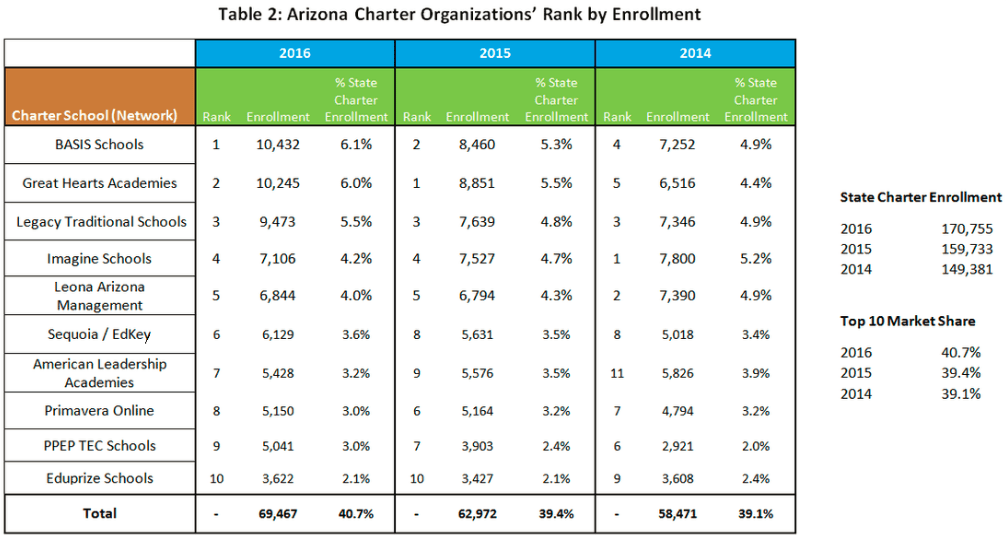Despite a tumultuous legislative session that had significant impacts on charter schools, charter student enrollment continues to rise. Initial estimates indicate that an additional 10,000 students attend a charter school this year, which is a 6.3 percent increase.
During the 2015 session, the Arizona Legislature passed two significant policies directly impacting charter schools – policies that may have impacted student enrollment. The state now funds charter schools based on the total number of students in a “network,” or groups of affiliated schools. These charter school networks are now treated, for the purpose of funding, similarly to traditional school districts. Additionally, the Legislature made significant changes to district sponsored charter schools in FY2015, requiring most to revert back to traditional district status.
The number of unique charter organizations dropped from 267 in FY15 to 250 in FY16, due in large part to the State Board of Charter Schools closure of 27 campuses as well as the 59 district–sponsored charter schools the Legislature forced to revert back to traditional district status.
In our June 2015 blog, we introduced you to Arizona’s largest charter organizations. Table 2 shows these charters with their updated FY2016 data. While the organizations in the top 10 remained stable from 2015 to 2016, the composition of the list changed significantly. The top two charter networks, Great Hearts Academies and Basis Schools, both experienced substantial enrollment increases, with Basis Schools taking the top spot.
The ten largest charter organizations enroll nearly 41 percent of all charter students. Charter market share for the two largest networks increased to 12 percent in FY16. The table also shows the relative ranking of charter organizations based on their share of charter student enrollment. The majority of the rankings were impacted by these initial FY16 estimates: 6 out of 10 school networks shifted their relative positioning within the ranking. These results continue to indicate that enrollment patterns within the state’s largest charter networks vary.



